Generative AI Models in Publishing: Current Events That Tell Us About The Future Of Generative AI In Publishing
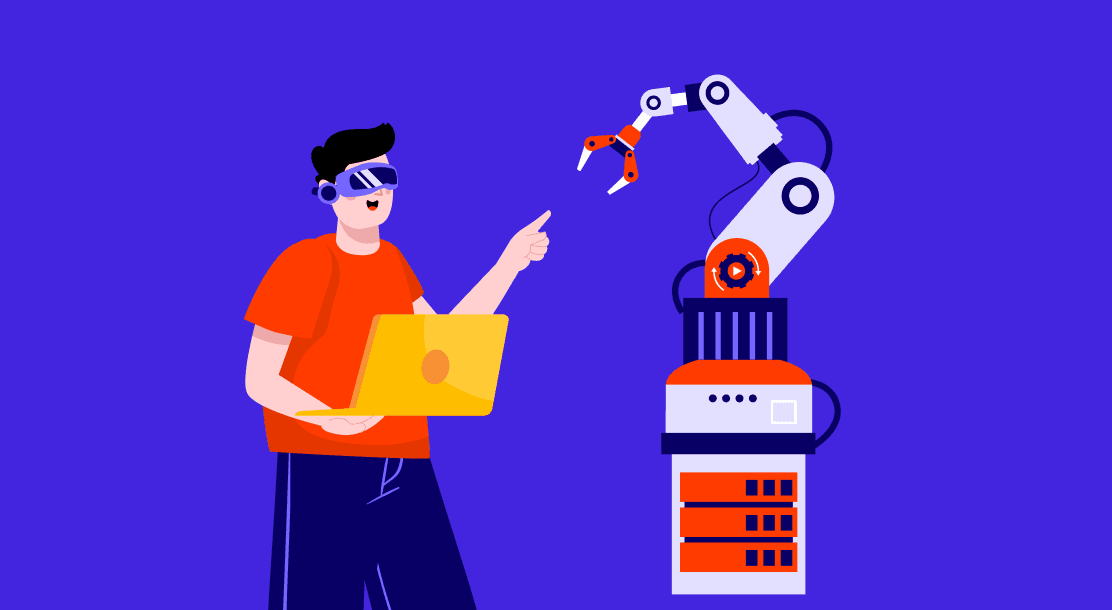
The realm of publishing has undergone a remarkable transformation with the emergence of generative AI models. This cutting-edge technology, powered by sophisticated machine learning algorithms and fueled by vast amounts of data, has the potential to revolutionize content creation, streamline workflows, and unlock new frontiers of creativity.
By harnessing the capabilities of AI generative technology, the publishing industry stands on the brink of a new era, where authors collaborate with intelligent machines, personalized content recommendations enhance reader experiences, and language barriers are overcome through seamless translation. Recent current events in the field provide a compelling glimpse into the promising future that generative AI holds for publishing.
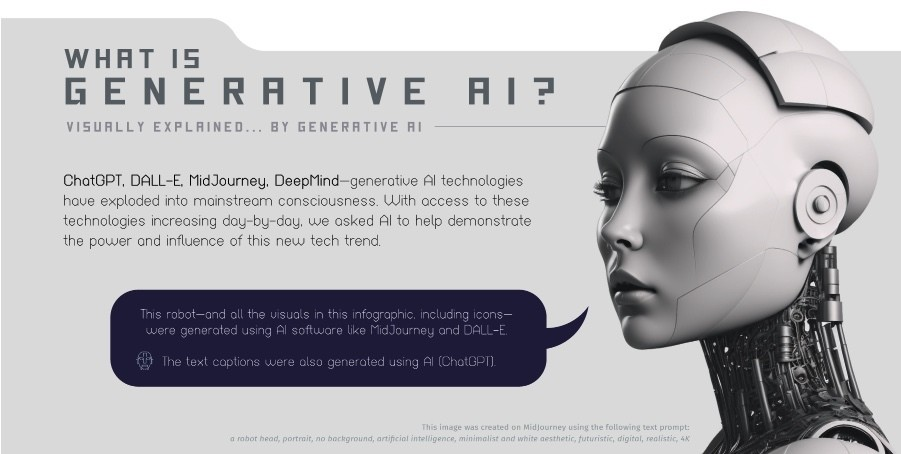
Current Events that Indicate the Future of Generative AI in Publishing
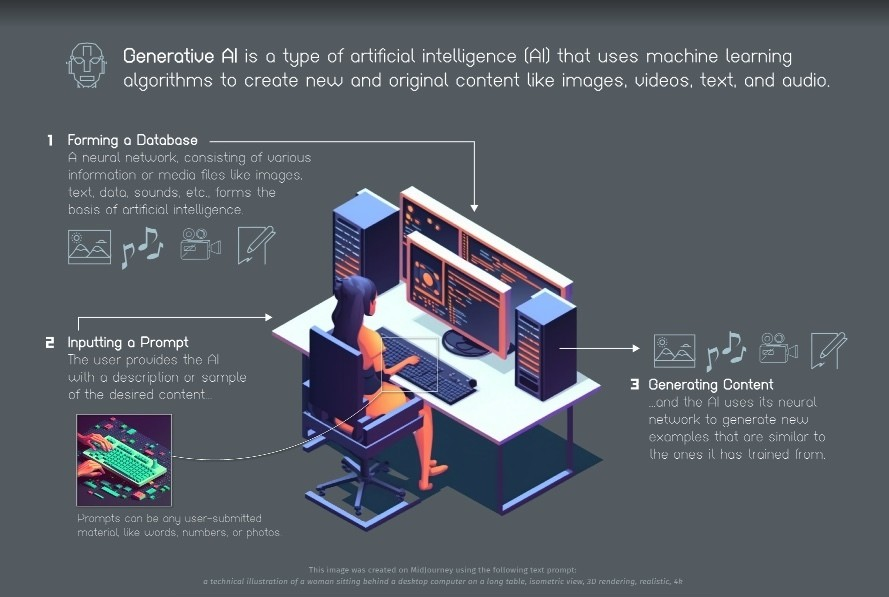
1. AI-Generated Novels and Literary Works
In a groundbreaking moment for the literary world, an AI program named ‘ChatGPT’ co-authored a novel titled ‘The AI Who Loved Me’, which earned a spot on the longlist for a prestigious literary award in 2022. This notable accomplishment demonstrates how AI generative technology can contribute to the creation of compelling narratives and expand the boundaries of storytelling.
The success of this AI-generated novel opens up new possibilities for collaboration between humans and machines in the realm of literature, showcasing the potential for innovative and captivating works born out of AI-assisted creativity.
2. Automated Content Generation
Generative AI has found a valuable application in automating content creation for news outlets and media organizations. AI algorithms can now generate basic news articles, financial reports, sports recaps, and even weather updates with impressive speed and accuracy.
This streamlines the process of generating routine content, freeing up human journalists and writers to focus on more in-depth analysis, investigative reporting, and creative storytelling. By leveraging generative AI models to handle repetitive tasks, publishers can enhance their efficiency, optimize resource allocation, and diversify their coverage.
3. Personalized Content and Recommendation Engines
Generative AI’s capacity to understand user preferences and deliver personalized content recommendations is reshaping the way readers engage with published works. Companies like Netflix and Spotify have successfully leveraged AI algorithms to analyze user data and generate tailored content suggestions.
In the realm of publishing, this AI generative technology holds great potential to create personalized reading lists, suggest relevant articles, and even curate customized books based on individual tastes and interests. By offering personalized content experiences, publishers can deepen reader engagement, foster loyalty, and provide a more satisfying and immersive reading journey.
4. Language Translation and Localization
Generative AI, coupled with advancements in natural language processing, has led to significant improvements in machine translation systems. Platforms such as Google Translate and DeepL are increasingly capable of accurately and fluently translating complex texts across multiple languages.
This breakthrough technology not only facilitates the dissemination of published works to a global audience but also fosters cross-cultural exchange by breaking down language barriers. With the continued refinement of generative AI language translation models, publishers can reach broader audiences worldwide and foster a more interconnected and diverse literary landscape.
The Role of Generative AI in Publishing
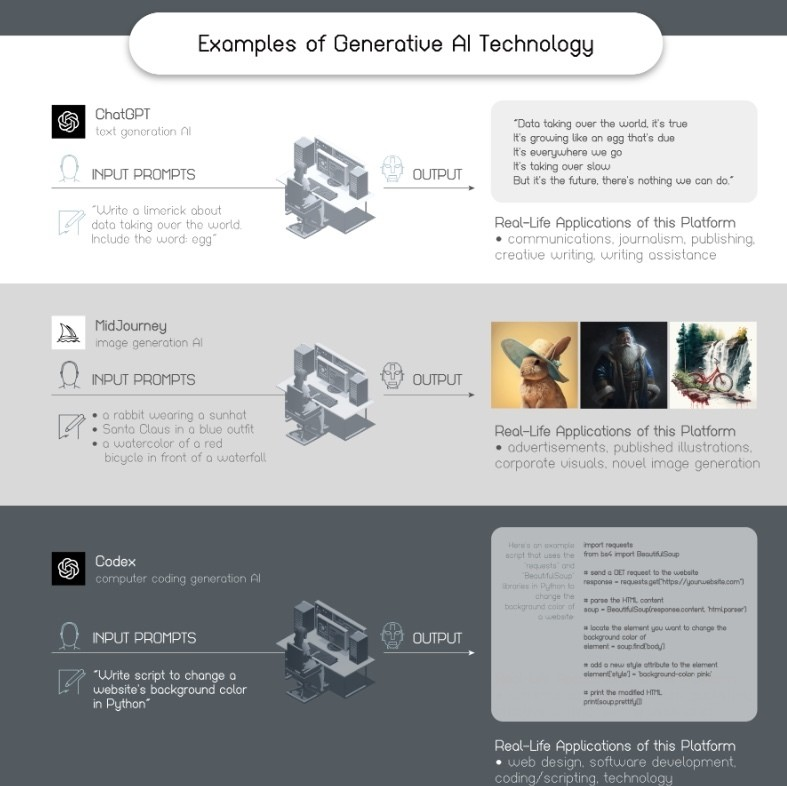
1. Streamlining content creation and workflows
One of the primary benefits of generative AI models in publishing is their ability to streamline content creation and workflows. AI algorithms can automate repetitive tasks, such as article generation, data analysis, and content summarization, significantly reducing the time and effort required from human creators.
This frees up valuable resources and enables content creators to focus on more intricate and value-added aspects of their work, including in-depth research, analysis, and creative ideation. By augmenting human capabilities, generative AI optimizes content production processes, enhances productivity, and allows publishers to deliver high-quality content more efficiently.
2. Enhancing collaboration between humans and machines
AI generative technology serves as a powerful tool for collaboration between humans and machines in the creative process. Through AI-assisted content generation and co-creation, authors, journalists, and content creators can leverage the capabilities of AI algorithms to augment their creativity, generate new ideas, and explore innovative storytelling methods.
The symbiotic relationship between human ingenuity and generative AI’s computational power unlocks new realms of possibility, empowering creators to push the boundaries of their work and create groundbreaking and imaginative content.
3. Personalizing the reading experience
Generative AI has the potential to revolutionize the reading experience by enabling publishers to offer personalized content recommendations and tailored experiences to individual readers. By analyzing user preferences, behavior, and past reading history, AI algorithms can curate customized reading lists, recommend relevant articles, and create tailored content packages.
This personalization not only enhances reader engagement and satisfaction but also enables publishers to deliver content that resonates with their audience on a deeper level. Readers are presented with a curated selection of works that align with their interests and preferences, leading to a more enjoyable and immersive reading journey.
5. Expanding global reach through language translation
The advancements in AI generative language translation have significant implications for the global publishing industry. By breaking down language barriers, publishers can reach broader audiences worldwide. Accurate and fluent machine translation facilitates the dissemination of published works to diverse linguistic communities, fostering cross-cultural understanding and expanding the reach of literature.
This newfound accessibility promotes cultural exchange, enhances diversity in reading material, and offers opportunities for authors and publishers to explore international markets.
Challenges and Considerations for Generative AI in Publishing
1. Ensuring quality and authenticity
One of the key challenges in utilizing generative AI models in publishing is maintaining the quality and authenticity of AI-generated content. AI algorithms excel at producing coherent narratives, but they may struggle with capturing the depth of human emotions and nuanced storytelling. Publishers must establish mechanisms to verify and validate AI-generated content to ensure accuracy, credibility, and adherence to editorial standards. It is essential to balance efficiency and maintain the unique characteristics of human-authored content.
2. Addressing bias and ethical concerns
Generative AI algorithms can inadvertently perpetuate biases present in the training data, resulting in biased or unfair content generation. To ensure fairness and inclusivity, publishers must address and mitigate biases within AI systems.
Ethical considerations, such as protecting intellectual property rights, respecting privacy, and ensuring responsible content dissemination, should also be at the forefront of discussions surrounding the use of generative AI in publishing. Transparent and ethical practices are vital for maintaining trust with readers and stakeholders.
3. Striking the balance between human and AI Involvement
Finding the right balance between human and generative AI involvement is crucial for the successful integration of generative AI in the publishing industry. While AI algorithms can enhance productivity and creativity, it is essential to recognize and leverage the unique strengths of human authors, journalists, and content creators.
Generative AI should complement human expertise rather than replace it entirely. Publishers must foster a collaborative environment that encourages the interplay of human and AI intelligence, allowing for innovative and impactful content creation.
The current events surrounding generative AI models in publishing paint an exciting picture of what the future holds for the industry. From co-authored novels to personalized content recommendations and efficient content generation, AI is poised to become a game-changer, transforming how we create, consume, and interact with content. However, it’s important to strike a balance between the capabilities of AI and human creativity, ensuring that AI is employed as a tool to augment human potential rather than replacing it entirely.
Introducing Pepper AI
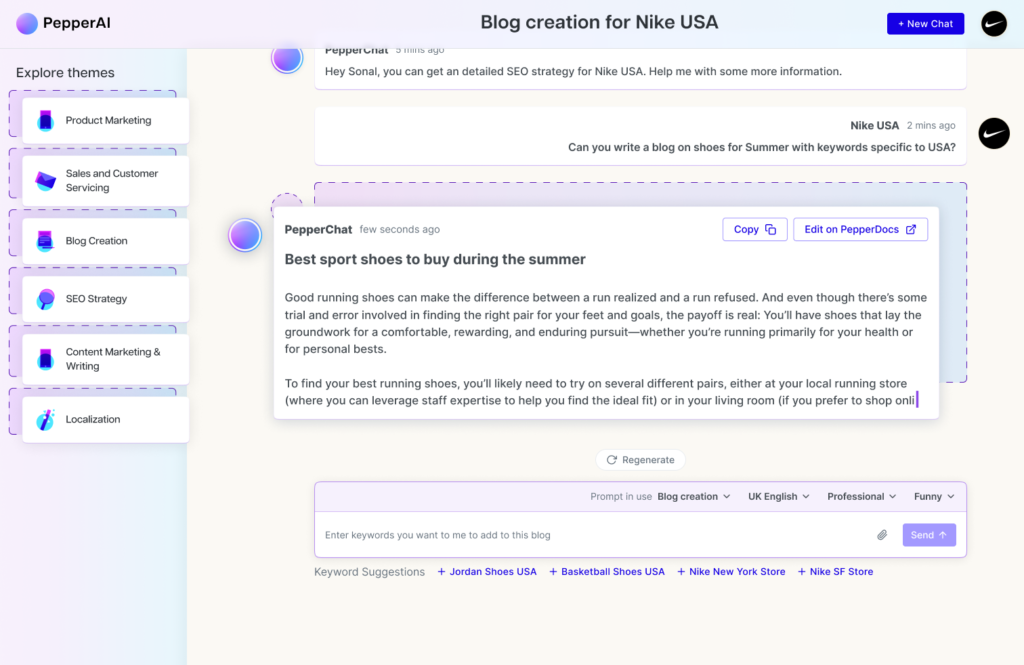
Pepper AI is set at the intersection of AI and human creativity, playing to each other’s strengths. It leverages AI’s speed and ability to learn and combines it with human creativity and excellence through a global talent platform, to bring out the best of both worlds.
It is essentially a chatbot modeled along the pain points of content marketers. The interactive AI-assisted chat experience leads you down a tree-based categorization system with meaningful workflows. The overall idea is to not just provide information and insights but to make them actionable and fit them intuitively into your content marketing workflow.
Its main feature is the workflow-first approach. Instead of working in siloes where a tool simply assists in AI writing or one aspect of the content marketing process, Pepper AI is built into a content marketing workflow, a platform that manages the entire content marketing process.
Unlike generic statements, this AI-assisted chatbot takes into account data from external sources like your company website to provide a highly contextual output that is tailored to your business needs, saving you the time and effort to set context every time. This a feature we believe will be immensely useful for enterprises and growing SMBs. Try it out now!
FAQs
While generative AI has made significant strides in content creation, it is unlikely to replace human authors and journalists entirely. AI should be seen as a powerful tool to augment human creativity rather than a substitute for human intelligence. Human creativity, critical thinking, and emotional depth are essential elements that AI cannot replicate fully.
Generative AI can benefit the publishing industry by automating routine content creation, facilitating personalized content recommendations, improving language translation, and enhancing collaboration between humans and machines in the creative process. These advancements can streamline workflows, improve user experiences, and open new opportunities for creativity and global connectivity.
Ethical concerns surrounding generative AI in publishing include issues related to copyright and intellectual property, bias in AI-generated content, and the responsible use of AI algorithms for content dissemination. The industry must address these concerns proactively and ensure the ethical use of AI in publishing.
Generative AI in publishing faces challenges such as maintaining quality and authenticity in AI-generated content, ensuring unbiased algorithms, and addressing concerns about job displacement. Striking the right balance between human and AI involvement will be crucial for the industry’s success. Additionally, the industry must navigate legal and ethical considerations to ensure responsible and fair use of AI in publishing.
Latest Blogs
Explore how Google’s 2025 AI search updates triggered ranking chaos. Learn actionable strategies to adapt your SEO for AI Overviews, zero-click searches, and SERP volatility. Stay ahead now.
Learn how to rank on AI search engines like ChatGPT, Perplexity, and Gemini by optimizing your content for authority, structure, and relevance. Stay ahead in AI-driven search with this strategic guide.
Explore the best healthcare SEO services for your medical practice. Improve online visibility and effectively reach more patients in need of your services.